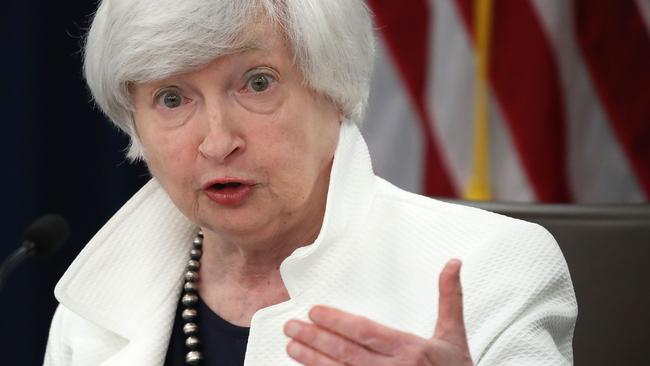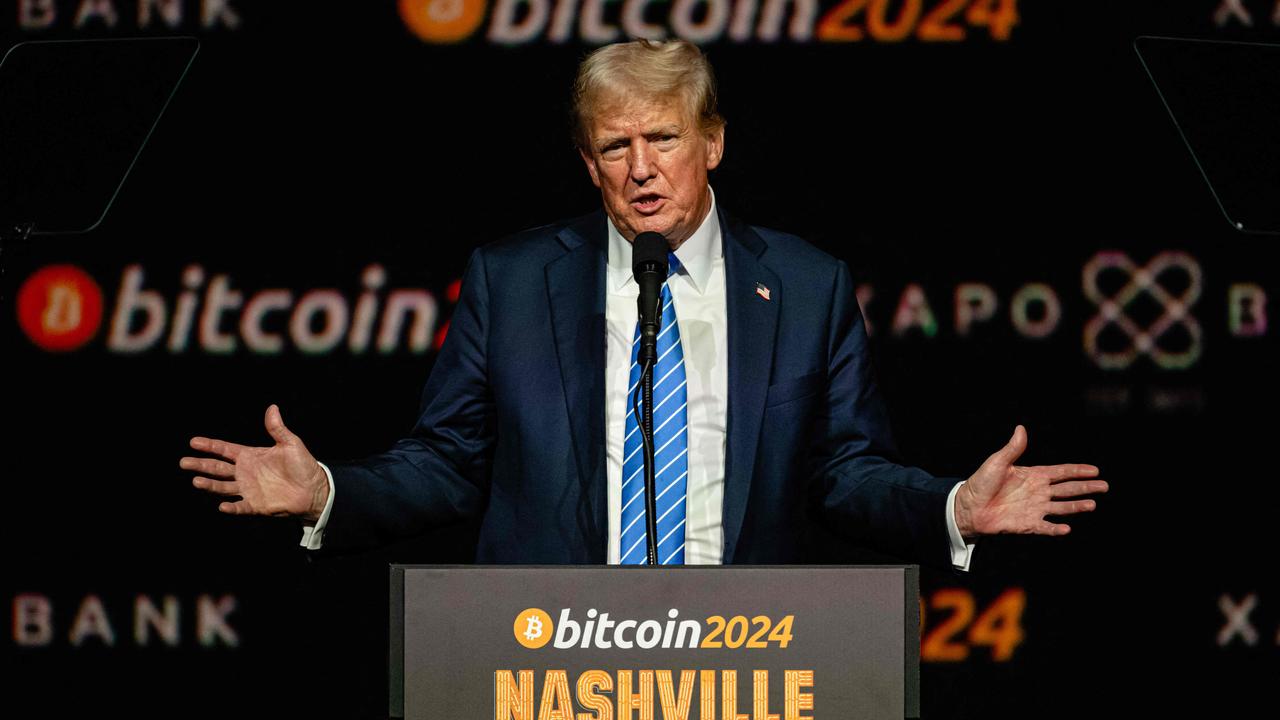US Fed unveils plans to pare holdings, hints at another rate rise
The US Fed will initiate in October its plan to shrink its holdings, and left open a rise in rates by December.

The US Federal Reserve says it will initiate in October its long-telegraphed plan to shrink the portfolio of bonds acquired after the 2008 crisis and left open the possibility of raising short-term interest rates by December.
The Fed left rates unchanged today, but the central bank pencilled in one more rate rise in 2017, even though persistently low inflation has given some officials second thoughts about a move this year.
“We believe the recovery is on a strong track,” Fed Chairwoman Janet Yellen said at a news conference following the conclusion of the Fed’s two-day policy meeting, explaining why officials expect to keep raising rates gradually in coming years.
The decision to reduce the bond portfolio has been signalled for months by the Fed, which is attempting to close the books on an unprecedented and sometimes controversial bond-buying experiment to support the US economy and financial markets. The vote was unanimous.
“The basic message here is US economic performance has been good,” Ms Yellen said. “The American people should feel the steps we have taken to normalise monetary policy ... are well justified given the very substantial progress we’ve seen in the economy.”
The bigger question this week centred on how the Fed would frame the debate over raising rates in December and beyond. Fed officials’ newest economic projections indicated officials still largely expect to raise rates one more time this year.
But they showed slightly less urgency about the level of rates over the long run, and more officials now see the Fed undershooting its 2 per cent inflation target for longer than they did in June, the last time they released economic projections.
Some 12 of 16 officials said they expected the Fed would need to raise rates at least one more time before year-end, the same as in June. Policy makers continued to expect three more rate increases next year, two more in 2019 and one in 2020.
The median projection for the longer-run level of interest rates also edged down to 2.75 per cent in the latest projections, versus 3 per cent in June. Officials released their projection of interest rates for 2020 for the first time, and they implied many officials see little need to raise rates after 2019.
The Fed has raised rates by a quarter percentage point four times since late 2015, most recently in June to a range between 1 per cent and 1.25 per cent, after keeping them near zero for seven years.
Since officials met in July, the unemployment rate has held near a 16-year low, but inflation has stayed soft, challenging the expectation of top officials, including Ms Yellen, that a deceleration in price pressures this spring would prove transitory.
While the labour market and economic output have largely performed in line with officials’ expectations this year, inflation has been a puzzle. In recent years, factors such as a decline in commodities and energy prices, a stronger dollar and labour-market slack helped explain why inflation undershot the Fed’s target, but those influences have faded and yet inflation hasn’t rebounded.
The Fed’s preferred annual inflation gauge, excluding volatile food and energy categories, stood at 1.4 per cent in July, down from 1.9 per cent in January and below the central bank’s 2 per cent target.
Officials boosted their projection of gross domestic product for this year. They now expect economic output to rise 2.4 per cent, versus a projection of 2.2 per cent in June, and they still expect the unemployment rate to fall to 4.3 per cent this year. But they reduced their projection of core inflation to 1.5 per cent for the end of this year, from 1.7 per cent in June, and to 1.9 per cent for the end of next year, versus 2 per cent in June.
The Fed’s postmeeting policy statement showed few changes to how officials view the economy’s performance in recent months. Officials noted a recent upturn in business spending.
The Fed isn’t expected to alter rates at its next meeting, October 31-November 1, leaving a mid-December policy meeting as the Fed’s last scheduled chance to push rates higher this year. This morning, traders in futures markets placed a 57 per cent probability on a rate increase at the December meeting, according to CME Group. About 77 per cent of economists surveyed by The Wall Street Journal this month said the Fed’s next interest-rate increase would come in December.
The Fed will have several additional months of labour and inflation data before then, but those figures are likely to be distorted by recent hurricanes that hit Texas, Louisiana and Florida. In its postmeeting statement, the Fed said it expected storm-related disruptions and rebuilding would affect economic activity in the short run but not materially over the medium term, suggesting it wouldn’t have a bearing on Fed policy decisions.
Meantime, the Fed has managed to formulate plans to shrink its $US4.5 trillion portfolio of bonds and other assets without provoking much concern from investors. How Ms Yellen navigates this final chapter could shape how future policy makers view the relative merits of the bond-buying episodes in subsequent downturns and could offer a road map for other central banks, especially the European Central Bank, that are preparing their own retreat.
Markets haven’t reacted much to the plans in part because other central banks are still buying government bonds and other assets and because the Fed has communicated a plan to gradually remove their support. Beginning in October, the Fed will end its practice of fully reinvesting the principal payments of maturing into new bonds and instead allow $US10 billion in holdings to roll off without reinvestment every month. Those amounts will increase by $US10 billion each quarter to a maximum of $US50 billion.
“Our balance sheet will decline gradually and predictably,” Ms Yellen said at the news conference.
One irony of the Fed’s latest low-inflation predicament is that many critics of the bond-buying programs — particularly the second and third rounds launched in 2010 and 2012, respectively — warned they would lead to runaway inflation and currency debasement. Now that the Fed is winding down those programs, the future of rate increases remains clouded by doubts over why inflation isn’t stronger.
In each of the past two years, Fed officials have sketched out several rate increases, but lifted rates just once at the end of each year. This year has been different because of a synchronised upturn in global growth and easing financial conditions that have sent stocks to new records while bond yields, which ran up sharply after President Donald Trump’s election last year, have drifted back down.
The combination of relatively stable economic projections and a lower interest-rate outlook shows Fed officials have concluded the economy either can’t withstand or won’t need very high interest rates, even to achieve the modest growth and low inflation officials anticipate.
In June, Ms Yellen said inflation appeared to be soft due to transitory factors, including one-off declines for a handful of items such as wireless phone plans and prescription drugs. In July, she said that was still her expectation, but she qualified her statement with a nod to the inherent uncertainty.
“We believe this year’s shortfall in inflation primarily reflects developments that are largely unrelated to broader economic conditions,” Ms Yellen. With the labour market continuing to strengthen, officials “continue to expect inflation to move up.”
Still, the recent downturn served as a reminder that officials’ understanding of inflation dynamics “is not perfect,” she added.
Dow Jones Newswires


